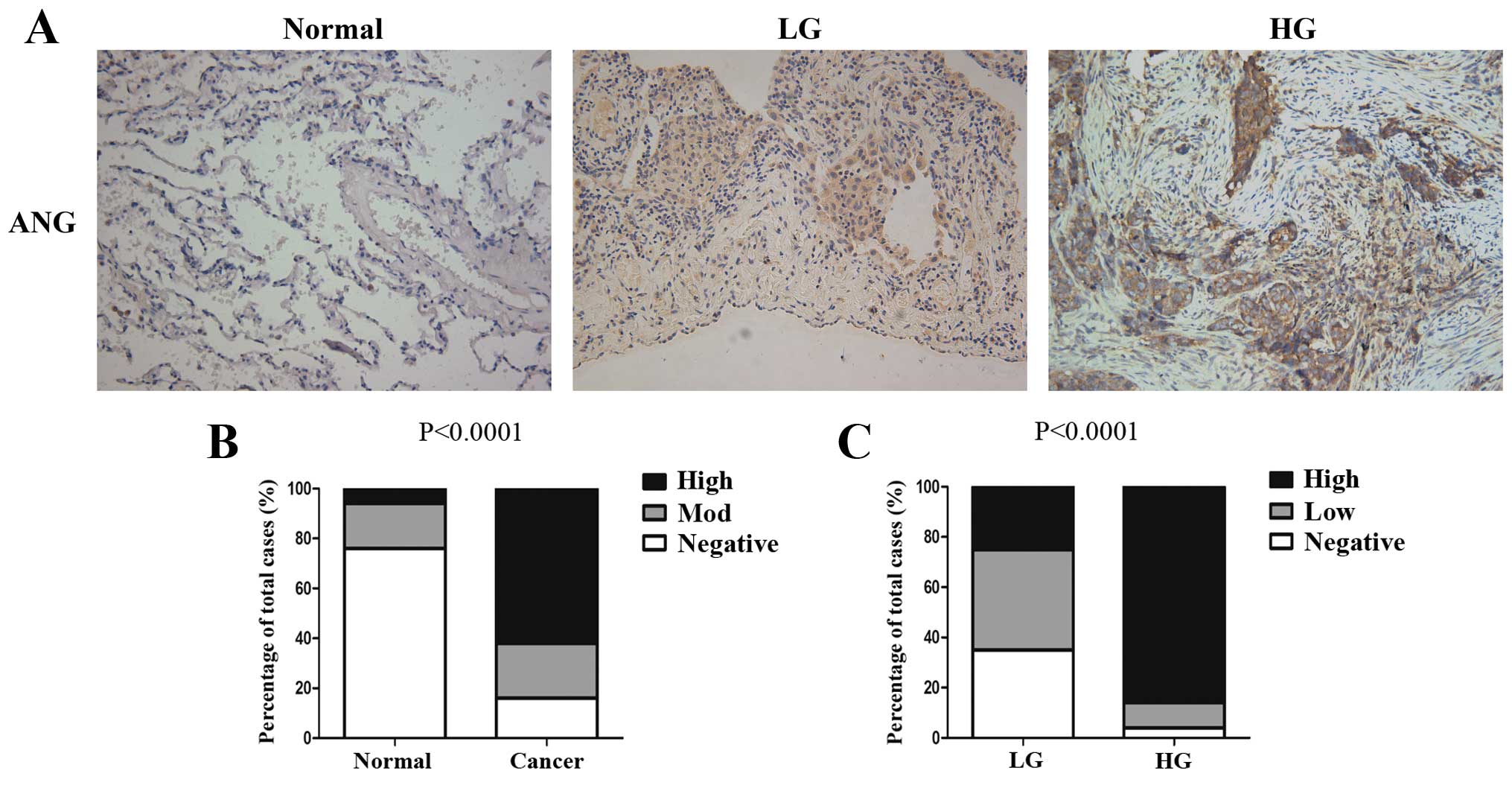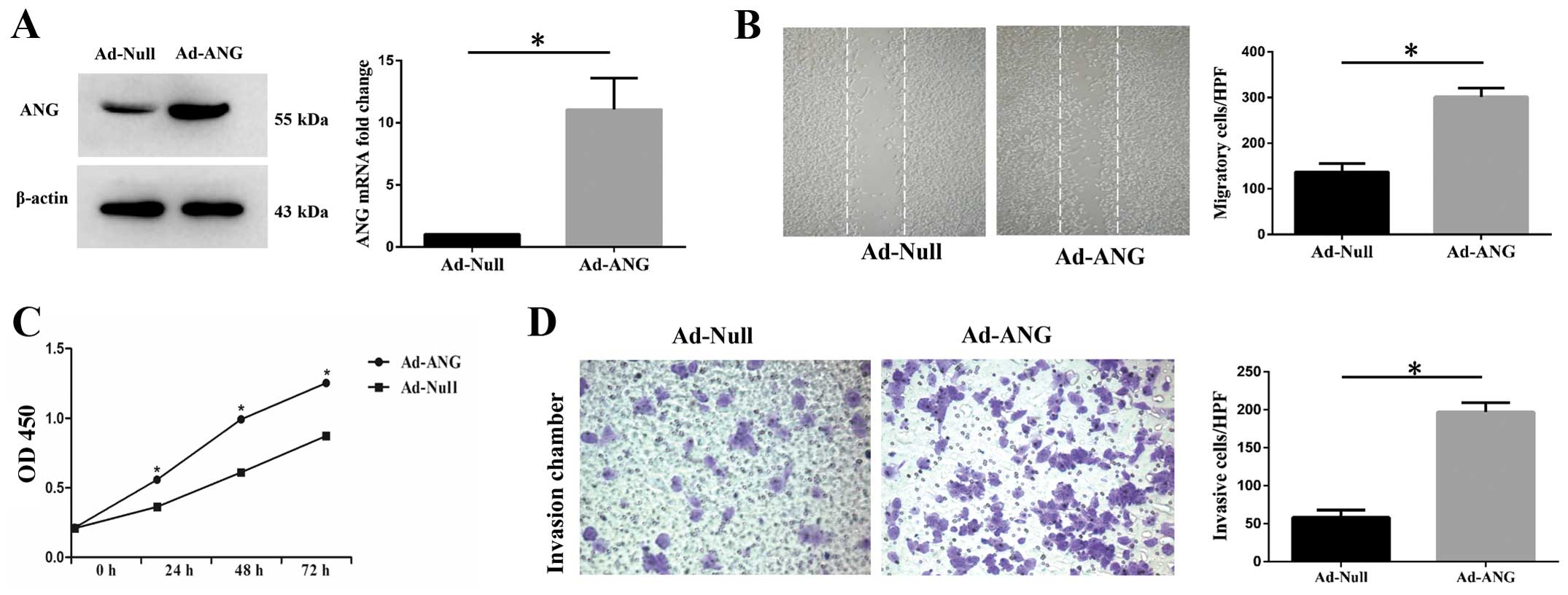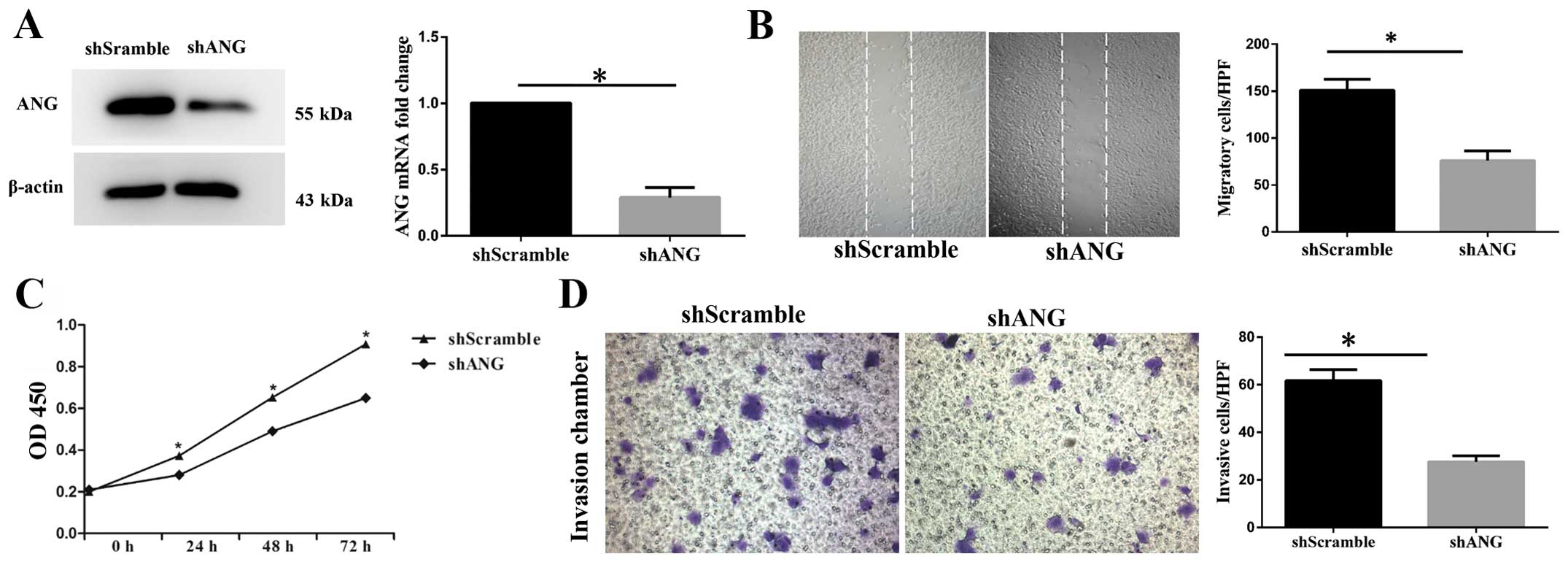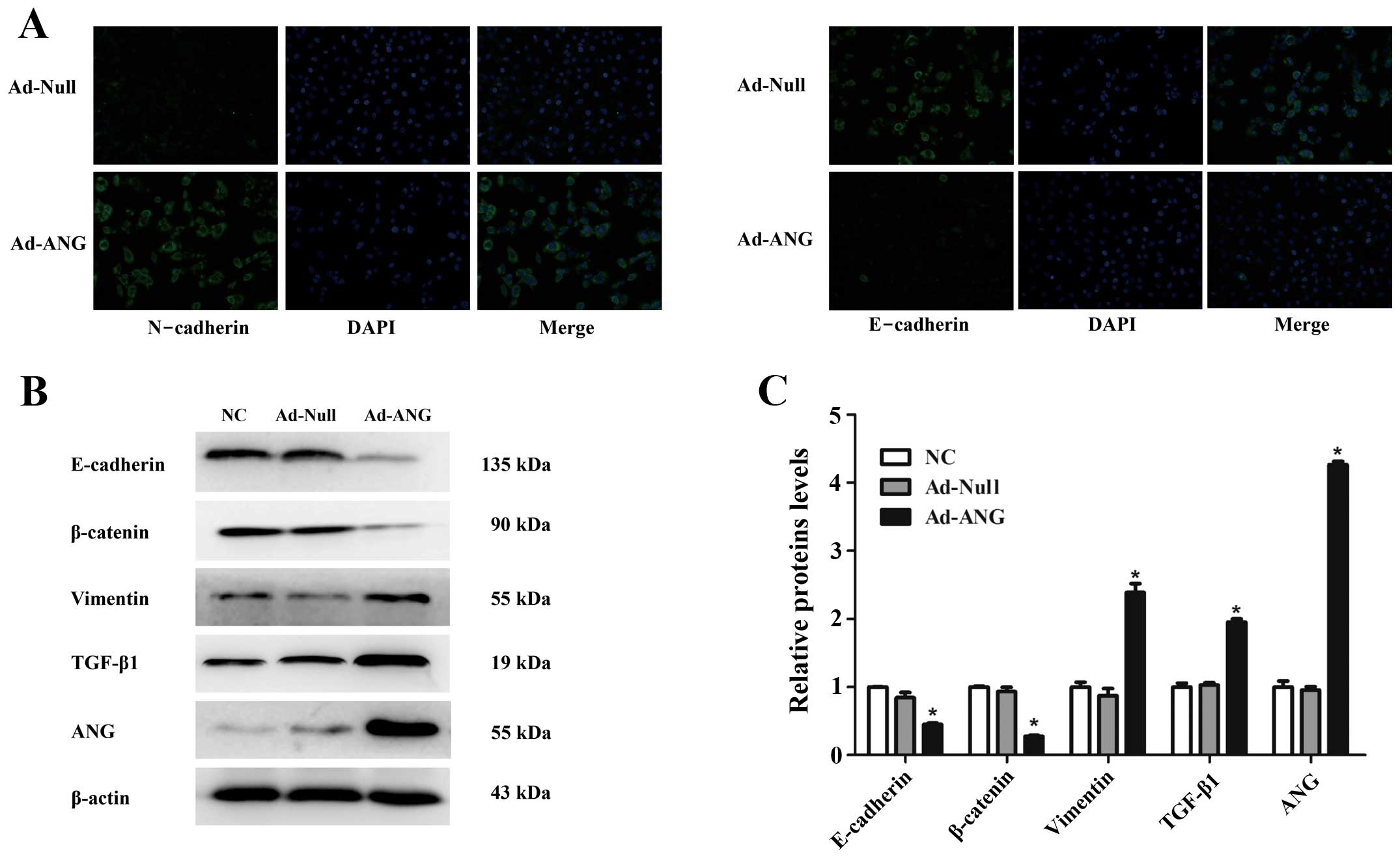|
1
|
Paez JG, Jänne PA, Lee JC, Tracy S,
Greulich H, Gabriel S, Herman P, Kaye FJ, Lindeman N, Boggon TJ, et
al: EGFR mutations in lung cancer: Correlation with clinical
response to gefitinib therapy. Science. 304:1497–1500. 2004.
View Article : Google Scholar : PubMed/NCBI
|
|
2
|
Soda M, Choi YL, Enomoto M, Takada S,
Yamashita Y, Ishikawa S, Fujiwara S, Watanabe H, Kurashina K,
Hatanaka H, et al: Identification of the transforming EML4-ALK
fusion gene in non-small-cell lung cancer. Nature. 448:561–566.
2007. View Article : Google Scholar : PubMed/NCBI
|
|
3
|
Li S and Hu GF: Angiogenin-mediated rRNA
transcription in cancer and neurodegeneration. Int J Biochem Mol
Biol. 1:26–35. 2010.PubMed/NCBI
|
|
4
|
Nilsson UW, Abrahamsson A and Dabrosin C:
Angiogenin regulation by estradiol in breast tissue: tamoxifen
inhibits angiogenin nuclear translocation and antiangiogenin
therapy reduces breast cancer growth in vivo. Clin Cancer Res.
16:3659–3669. 2010. View Article : Google Scholar : PubMed/NCBI
|
|
5
|
Ibaragi S, Yoshioka N, Kishikawa H, Hu JK,
Sadow PM, Li M and Hu GF: Angiogenin-stimulated rRNA transcription
is essential for initiation and survival of AKT-induced prostate
intraepithelial neoplasia. Mol Cancer Res. 7:415–424. 2009.
View Article : Google Scholar : PubMed/NCBI
|
|
6
|
Yuan Y, Wang F, Liu XH, Gong DJ, Cheng HZ
and Huang SD: Angiogenin is involved in lung adenocarcinoma cell
proliferation and angiogenesis. Lung Cancer. 66:28–36. 2009.
View Article : Google Scholar : PubMed/NCBI
|
|
7
|
Ivanov P, Emara MM, Villen J, Gygi SP and
Anderson P: Angiogenin-induced tRNA fragments inhibit translation
initiation. Mol Cell. 43:613–623. 2011. View Article : Google Scholar : PubMed/NCBI
|
|
8
|
Li S and Hu GF: Emerging role of
angiogenin in stress response and cell survival under adverse
conditions. J Cell Physiol. 227:2822–2826. 2012. View Article : Google Scholar :
|
|
9
|
Polyak K and Weinberg RA: Transitions
between epithelial and mesenchymal states: Acquisition of malignant
and stem cell traits. Nat Rev Cancer. 9:265–273. 2009. View Article : Google Scholar : PubMed/NCBI
|
|
10
|
Mani SA, Guo W, Liao MJ, Eaton EN, Ayyanan
A, Zhou AY, Brooks M, Reinhard F, Zhang CC, Shipitsin M, et al: The
epithelial-mesenchymal transition generates cells with properties
of stem cells. Cell. 133:704–715. 2008. View Article : Google Scholar : PubMed/NCBI
|
|
11
|
Zeisberg M and Neilson EG: Biomarkers for
epithelial-mesenchymal transitions. J Clin Invest. 119:1429–1437.
2009. View
Article : Google Scholar : PubMed/NCBI
|
|
12
|
Kokkinos MI, Wafai R, Wong MK, Newgreen
DF, Thompson EW and Waltham M: Vimentin and epithelial-mesenchymal
transition in human breast cancer-observations in vitro and in
vivo. Cells Tissues Organs. 185:191–203. 2007. View Article : Google Scholar
|
|
13
|
Kurozumi A, Kato M, Goto Y, Matsushita R,
Nishikawa R, Okato A, Fukumoto I, Ichikawa T and Seki N: Regulation
of the collagen cross-linking enzymes LOXL2 and PLOD2 by
tumor-suppressive microRNA-26a/b in renal cell carcinoma. Int J
Oncol. 48:1837–1846. 2016.PubMed/NCBI
|
|
14
|
Hu K, Tian Y, Du Y, Huang L, Chen J, Li N,
Liu W, Liang Z and Zhao L: Atrazine promotes RM1 prostate cancer
cell proliferation by activating STAT3 signaling. Int J Oncol.
48:2166–2174. 2016.PubMed/NCBI
|
|
15
|
Fett JW, Strydom DJ, Lobb RR, Alderman EM,
Bethune JL, Riordan JF and Vallee BL: Isolation and
characterization of angiogenin, an angiogenic protein from human
carcinoma cells. Biochemistry. 24:5480–5486. 1985. View Article : Google Scholar : PubMed/NCBI
|
|
16
|
Miyake M, Goodison S, Lawton A,
Gomes-Giacoia E and Rosser CJ: Angiogenin promotes tumoral growth
and angiogenesis by regulating matrix metallopeptidase-2 expression
via the ERK1/2 pathway. Oncogene. 34:890–901. 2015. View Article : Google Scholar :
|
|
17
|
Li L, Pan XY, Shu J, Jiang R, Zhou YJ and
Chen JX: Ribonuclease inhibitor up-regulation inhibits the growth
and induces apoptosis in murine melanoma cells through repression
of angiogenin and ILK/PI3K/AKT signaling pathway. Biochimie.
103:89–100. 2014. View Article : Google Scholar : PubMed/NCBI
|
|
18
|
Shu J, Huang M, Tian Q, Shui Q, Zhou Y and
Chen J: Down-regulation of angiogenin inhibits the growth and
induces apoptosis in human bladder cancer cells through regulating
AKT/mTOR signaling pathway. J Mol Histol. 46:157–171. 2015.
View Article : Google Scholar : PubMed/NCBI
|
|
19
|
Dutta S, Bandyopadhyay C, Bottero V,
Veettil MV, Wilson L, Pins MR, Johnson KE, Warshall C and Chandran
B: Angiogenin interacts with the plasminogen activation system at
the cell surface of breast cancer cells to regulate plasmin
formation and cell migration. Mol Oncol. 8:483–507. 2014.
View Article : Google Scholar : PubMed/NCBI
|
|
20
|
Ramcharan SK, Lip GY, Stonelake PS and
Blann AD: Angiogenin outperforms VEGF, EPCs and CECs in predicting
Dukes' and AJCC stage in colorectal cancer. Eur J Clin Invest.
43:801–808. 2013. View Article : Google Scholar : PubMed/NCBI
|
|
21
|
Makker A and Goel MM: Tumor progression,
metastasis, and modulators of epithelial-mesenchymal transition in
endometrioid endometrial carcinoma: An update. Endocr Relat Cancer.
23:R85–R111. 2016. View Article : Google Scholar
|
|
22
|
Mitra A, Mishra L and Li S: EMT, CTCs and
CSCs in tumor relapse and drug-resistance. Oncotarget.
6:10697–10711. 2015. View Article : Google Scholar : PubMed/NCBI
|
|
23
|
Vuoriluoto K, Haugen H, Kiviluoto S,
Mpindi JP, Nevo J, Gjerdrum C, Tiron C, Lorens JB and Ivaska J:
Vimentin regulates EMT induction by Slug and oncogenic H-Ras and
migration by governing Axl expression in breast cancer. Oncogene.
30:1436–1448. 2011. View Article : Google Scholar
|
|
24
|
Araki K, Shimura T, Suzuki H, Tsutsumi S,
Wada W, Yajima T, Kobayahi T, Kubo N and Kuwano H: E/N-cadherin
switch mediates cancer progression via TGF-β-induced
epithelial-to-mesenchymal transition in extrahepatic
cholangiocarcinoma. Br J Cancer. 105:1885–1893. 2011. View Article : Google Scholar : PubMed/NCBI
|
|
25
|
Gravdal K, Halvorsen OJ, Haukaas SA and
Akslen LA: A switch from E-cadherin to N-cadherin expression
indicates epithelial to mesenchymal transition and is of strong and
independent importance for the progress of prostate cancer. Clin
Cancer Res. 13:7003–7011. 2007. View Article : Google Scholar : PubMed/NCBI
|
|
26
|
Zhang X, Liu G, Kang Y, Dong Z, Qian Q and
Ma X: N-cadherin expression is associated with acquisition of EMT
phenotype and with enhanced invasion in erlotinib-resistant lung
cancer cell lines. PLoS One. 8:e576922013. View Article : Google Scholar : PubMed/NCBI
|
|
27
|
Berg A, Hoivik EA, Mjøs S, Holst F, Werner
HM, Tangen IL, Taylor-Weiner A, Gibson WJ, Kusonmano K, Wik E, et
al: Molecular profiling of endometrial carcinoma precursor, primary
and metastatic lesions suggests different targets for treatment in
obese compared to non-obese patients. Oncotarget. 6:1327–1339.
2015. View Article : Google Scholar :
|
|
28
|
Hipp S, Walch A, Schuster T, Losko S, Laux
H, Bolton T, Höfler H and Becker KF: Activation of epidermal growth
factor receptor results in snail protein but not mRNA
overexpression in endometrial cancer. J Cell Mol Med. 13:3858–3867.
2009. View Article : Google Scholar : PubMed/NCBI
|
|
29
|
Edme N, Downward J, Thiery JP and Boyer B:
Ras induces NBT-II epithelial cell scattering through the
coordinate activities of Rac and MAPK pathways. J Cell Sci.
115:2591–2601. 2002.PubMed/NCBI
|
|
30
|
Palafox M, Ferrer I, Pellegrini P, Vila S,
Hernandez-Ortega S, Urruticoechea A, Climent F, Soler MT, Muñoz P,
Viñals F, et al: RANK induces epithelial-mesenchymal transition and
stemness in human mammary epithelial cells and promotes
tumorigenesis and metastasis. Cancer Res. 72:2879–2888. 2012.
View Article : Google Scholar : PubMed/NCBI
|
|
31
|
Peng Y, Li L, Huang M, Duan C, Zhang L and
Chen J: Angiogenin interacts with ribonuclease inhibitor regulating
PI3K/AKT/mTOR signaling pathway in bladder cancer cells. Cell
Signal. 26:2782–2792. 2014. View Article : Google Scholar : PubMed/NCBI
|
|
32
|
Xu Z, Monti DM and Hu G: Angiogenin
activates human umbilical artery smooth muscle cells. Biochem
Biophys Res Commun. 285:909–914. 2001. View Article : Google Scholar : PubMed/NCBI
|
|
33
|
Liu S, Yu D, Xu ZP, Riordan JF and Hu GF:
Angiogenin activates Erk1/2 in human umbilical vein endothelial
cells. Biochem Biophys Res Commun. 287:305–310. 2001. View Article : Google Scholar : PubMed/NCBI
|
|
34
|
Li S, Yu W, Kishikawa H and Hu GF:
Angiogenin prevents serum withdrawal-induced apoptosis of P19
embryonal carcinoma cells. FEBS J. 277:3575–3587. 2010. View Article : Google Scholar : PubMed/NCBI
|



















